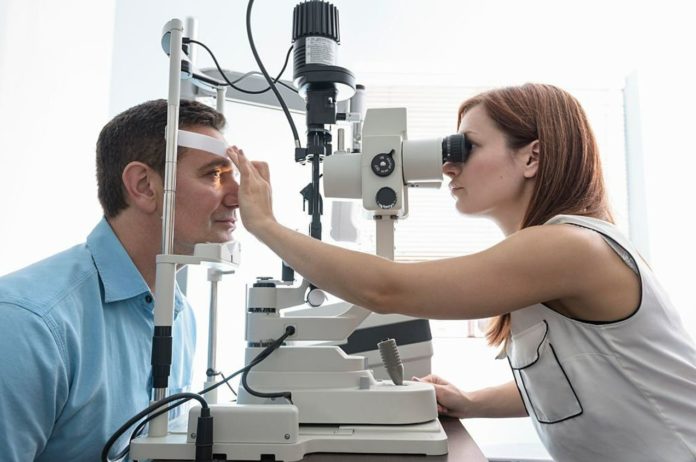Combining retinal blood vessel patterns with genetic data can accurately predict a person’s risk of coronary artery disease (CAD) and its lethal endpoint, myocardial infarction (MI).
The discovery could lead to a simple screening approach in which a person’s MI risk could be assessed during a routine eye exam, according to researchers will be speaking at the European Society of Human Genetics annual conference on Monday.
The team says they “knew that variations in the vasculature of the retina might offer insights into our health”.
First, they “studied the branching patterns of the retinal vasculature by calculating a measure named fractal dimension (Df) from data available from the UK Biobank (UKB)”.
UKB contains information on over 500,000 people from all around the UK, including demographic, epidemiological, clinical, imaging, and genotyping data.
The findings of the study revealed that “lower Df, simplified vessel branching patterns, is related to CAD and hence MI,” adds Ms Ana Villaplana-Velasco, a PhD student at the University of Edinburgh’s Usher and Roslin Institutes.
The researchers then created a model that may predict MI risk by evaluating UKB participants who had a MI event after their retinal images were collected. To determine an individual’s risk of MI, the model took into account, not just typical clinical parameters such age, gender, systolic blood pressure, BMI, and smoking status, but also Df.
“Strikingly, we discovered that our model was able to better classify participants with low or high MI risk in UKB when compared with established models that only include demographic data. The improvement of our model was even higher if we added a score related to the genetic propensity of developing MI,” Ms Villaplana-Velasco adds.
“We wondered if the Df-MI association was influenced by shared biology, so we looked at the genetics of Df and found nine genetic regions driving retinal vascular branching patterns. Four of these regions are known to be involved in cardiovascular disease genetics. In particular, we found that these common genetic regions are involved in processes related to MI severity and recovery.”
These findings could be valuable in determining disease propensity in the future. Changes in the pattern of blood vessels in the retina can also show the progress of other eye and body diseases, like diabetic retinopathy and stroke. The researchers suggest that each illness could have its own retinal variation profile.
“We would like to investigate this further, as well as undertaking a sex-specific analysis. We know that females with a higher MI or CAD risk tend to have pronounced retinal vascular deviations when compared to the male population,” says Ms. Villaplana-Velasco, adding “We would like to repeat our analysis separately in males and females to investigate if a sex-specific model for MI completes a better risk classification.”
Even while the researchers were aware that changes in retinal vasculature were linked to a person’s health, their conclusive findings surprised them.
“There have been multiple attempts to improve CAD and MI risk predictive models by accounting for retinal vascular traits, but these showed no significant improvement when compared with established models,” they write.
In this study, “we found that the clinical MI definition – the diagnostic codes that describe myocardial infarction events in medical records – is central to the successful development of predictive models, underpinning the need for developing robust disease definitions in large studies such as UKB. Once we validated our MI definition, we found that our model worked extremely well,” Ms Villaplana-Velasco adds.
In the future, a simple retinal check may be sufficient to identify patients who are in danger. An MI occurs at an average age of 60, and the researchers discovered that their model performed best more than five years before the occurrence.
“So the calculation of an individualised MI risk from those over 50 years old would seem to be appropriate,” Ms Villaplan-Velasco explains.
“This would enable doctors to suggest behaviours that could reduce risk, such as giving up smoking and maintaining normal cholesterol and blood pressure. Our work once more shows the importance of comprehensive analysis of data that is routinely collected and its value in the further development of personalised medicine.”
“This study demonstrates the importance of implementing prevention now, and how personalised health is providing us with the tools to do so,” highlights conference chair, Professor Alexandre Reymond.
Image Credit: Getty
You were reading: New Eye Test Can Detect A Heart Attack 5 Years Early and Accurately
